Introduction To Eagles: Mighty Birds Of Prey
Eagles are magnificent birds of prey that are highly revered by different cultures around the world. With their sharp talons, powerful wings, and keen eyesight, these majestic creatures are among the most skilled hunters in the animal kingdom. They are often associated with strength, bravery, freedom, and independence. The eagle’s reputation as a symbol of power and prowess has made it a popular subject in mythology, literature, and art for thousands of years. In this blog post, we’ll delve deeper into the world of eagles and explore their fascinating characteristics and behaviors.
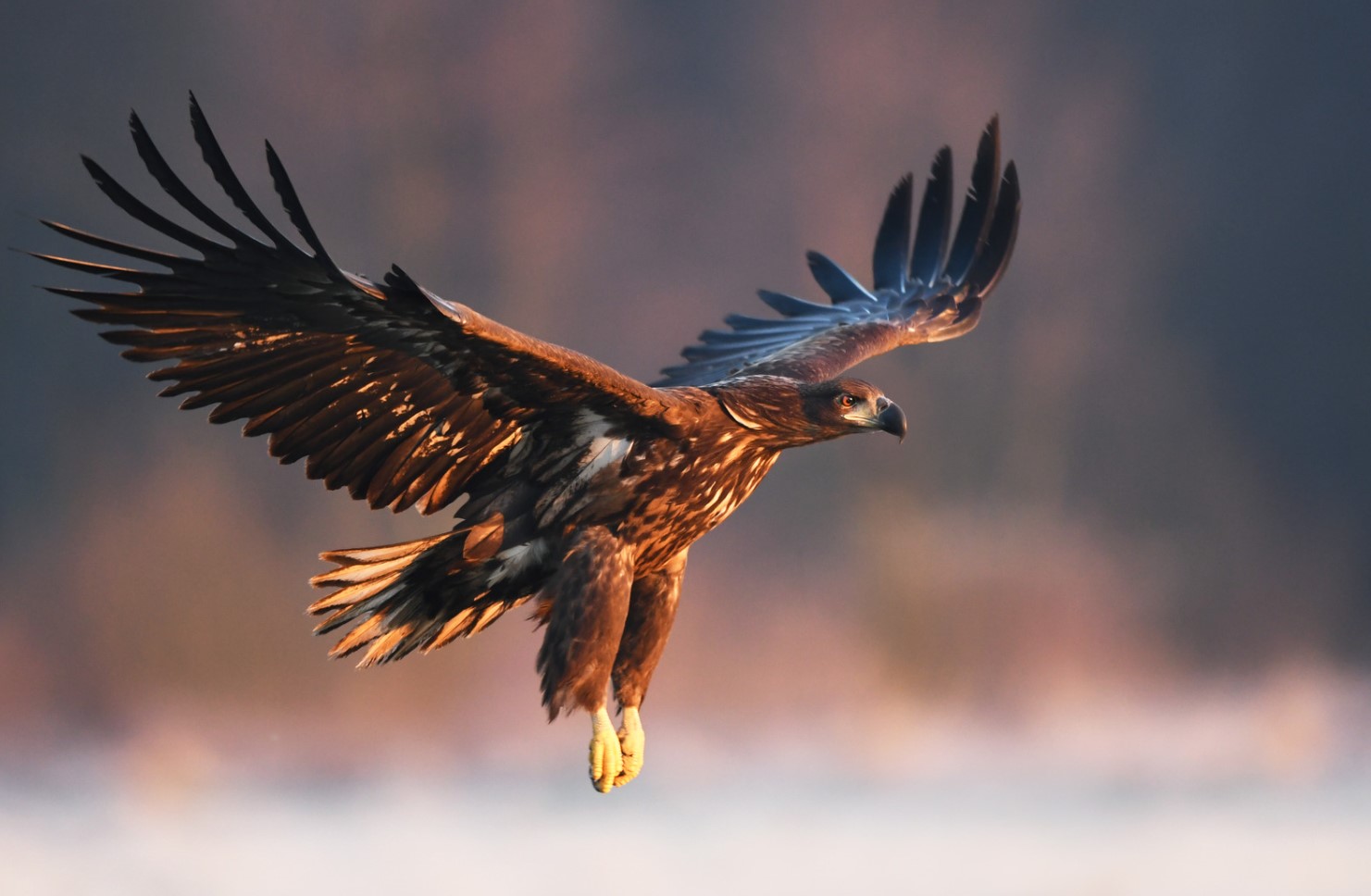
The Anatomy Of Eagles
Eagles have a streamlined body and wings that enable them to fly at high speeds and perform acrobatic maneuvers in the air. They have strong legs and sharp talons that they use to grasp and kill their prey. Their powerful beaks are hooked at the tip, allowing them to tear the flesh of their prey with ease. Eagles have excellent eyesight, enabling them to spot their prey from great distances. They also have a third eyelid called the nictitating membrane, which helps protect their eyes while flying.
- Eagles have a wingspan of up to 7 feet
- They have a lifespan of up to 30 years
- They can fly up to speeds of 100 miles per hour
The Habitat And Distribution Of Eagles
Eagles are found in different parts of the world, including North America, Europe, Asia, Africa, and Australia. They inhabit a variety of ecosystems, such as forests, mountains, savannas, and deserts. Some species of eagles, such as bald eagles and white-tailed eagles, are found exclusively in North America and Europe, respectively. Golden eagles have the widest distribution and are found in many parts of the world. Eagles are apex predators and occupy the top of the food chain in their respective habitats.
| Name of Eagle | Habitat | Distribution |
|---|---|---|
| Bald Eagle | Near water bodies and coastal regions | North America |
| Golden Eagle | Open habitats with cliffs and mountains | Europe, Asia, North America, and Africa |
| African Fish Eagle | Wetlands and savannas | Sub-Saharan Africa |
| Harpy Eagle | Tropical rainforests | Central and South America |
Overall, eagles are fascinating birds that never cease to amaze us with their strength, agility, and beauty. They play an important role in maintaining the balance of the ecosystem and are a vital part of many cultures and traditions around the world. In the next blog post, we’ll explore the different types and classifications of eagles.
Classification And Types Of Eagles
Eagles are some of the most majestic and powerful birds of prey. These large birds are known for their impressive hunting skills, sharp talons, and keen eyesight. When it comes to classifying eagles, there are several different types of these magnificent creatures, each with its unique characteristics and features.
- Sea Eagles: These eagles are also known as fish eagles, and as their name suggests, they feed primarily on fish. Sea eagles are further grouped into two types: the Old World sea eagles and the New World sea eagles. Old World sea eagles are found in Eurasia and Africa, while New World sea eagles are native to North and Central America.
- Snake Eagles: As the name suggests, snake eagles primarily feed on snakes, making them an essential part of the ecosystem by keeping snake populations in check. They are also known as serpent eagles, and there are several different types of snake eagles found in different parts of the world.
- Harpy Eagles: These large and powerful eagles are native to rainforests in Central and South America. Harpy eagles are known for their striking appearance, with a distinctive head crest and powerful talons.
In addition to these types of eagles, there are also other types, such as the booted eagles, which have feathered legs, and the hawk eagles, which are known for their agility and speed. Each type of eagle has its unique characteristics, making them distinct from one another.
| Eagle Types | Distinct Features |
|---|---|
| Sea Eagles | Primarily feed on fish, found in different parts of the world |
| Snake Eagles | Feed primarily on snakes, important for keeping snake populations in check |
| Harpy Eagles | Native to rainforests in Central and South America, known for their striking appearance and powerful talons |
| Booted Eagles | Have feathered legs, agile and graceful in flight |
| Hawk Eagles | Known for their agility and speed, hunt in open areas and forested regions |
As we can see, eagles are incredibly diverse creatures, with different types found in different regions of the world. Learning about the different types of eagles can be an exciting and educational experience for nature enthusiasts and birdwatchers alike.
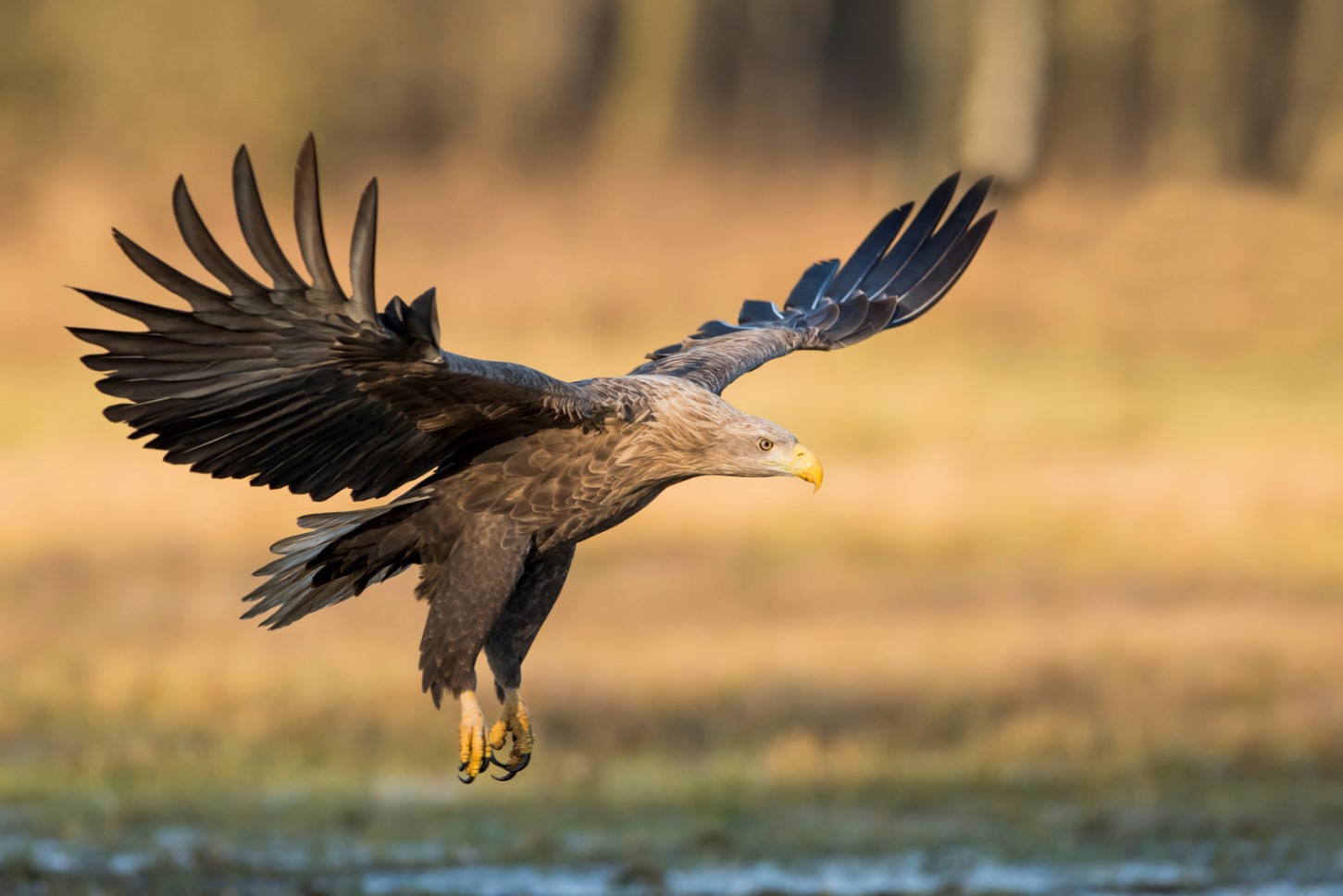
Bald Eagles: Endangered Emblem Of The United States
The bald eagle, the national bird and emblem of the United States since 1782, has long been a symbol of freedom and independence. The majestic bird of prey, with its striking white head and tail, can be found in every state except Hawaii. However, despite its iconic status, the bald eagle has faced serious threats to its survival in the past, and even today it remains an endangered species.
In the mid-20th century, bald eagle populations suffered a dramatic decline due primarily to the use of the pesticide DDT, which weakened the birds’ eggshells and caused them to break during incubation. This led to a sharp decline in reproductive success and a corresponding drop in the number of eagles. By the 1970s, there were only about 400 nesting pairs of bald eagles left in the lower 48 states.
- Today, thanks to conservation efforts and the banning of DDT, bald eagle populations are on the rise.
- As of 2020, there are an estimated 316,000 bald eagles in North America.
- However, the bird remains on the endangered species list due to ongoing threats such as habitat loss, hunting, and pollution.
Conservation efforts aimed at protecting the bald eagle have been largely successful. The Endangered Species Act of 1973 provided vital protections for the bird, including habitat conservation and the prohibition of “taking,” or harming or killing, bald eagles. Additionally, widespread public education about the bird’s plight has helped to generate support for its conservation.
| Threats to Bald Eagles | Conservation Efforts |
|---|---|
| Habitat loss due to development and human encroachment | Habitat conservation efforts, such as the acquisition of land for national parks and wildlife refuges |
| Fishing and hunting practices | Regulations on recreational and commercial fishing and hunting, as well as the protection of bald eagle nests |
| Pollution and other environmental contaminants | Efforts to reduce the use of harmful pesticides and chemicals, as well as increased monitoring of water quality and other environmental factors |
In conclusion, the bald eagle is an enduring symbol of American strength and freedom, but it is also a species that has faced significant threats to its survival. Conservation efforts have helped to stabilize populations, but there is still work to be done to ensure the long-term survival of this magnificent bird of prey.
Golden Eagles: Widespread And Powerful Raptors
Golden Eagles are majestic creatures that are widely known for their strength and impressive hunting skills. These raptors are one of the most widespread birds of prey in the world, with a vast range spanning from the northern hemisphere to the southern hemisphere. They are also known for their incredible power as hunters, with the ability to take down prey that are much larger than themselves.
These eagles are found across a wide range of habitats, including mountains, forests, and grasslands. They prefer open areas where they can easily spot their prey, which ranges from small rodents to large mammals such as deer and antelope.
- A Golden Eagle’s diet consists mainly of:
- Rabbits
- Hares
- Ground squirrels
- Pronghorns
- Coyotes
The Golden Eagle is a top predator in its ecosystem and has few natural enemies. However, humans are a significant threat to these birds, as they have been hunted for sport and their feathers, which are used for ceremonial purposes in some cultures. Habitat loss and pollution have also contributed to the decline of the Golden Eagle population in some areas.
| Scientific Name: | Aquila chrysaetos |
|---|---|
| Appearance: | Dark brown body; golden-brown head, nape, and neck. |
| Wingspan: | 6-7 feet (1.8-2.1 meters) |
| Weight: | 6.6-14 pounds (3-6.5 kilograms) |
| Habitat: | Mountains, forests, grasslands |
Despite these threats, there are many efforts underway to help protect the Golden Eagle and preserve its habitat. Conservation programs and laws aimed at protecting raptors have been successful in some areas, and there are efforts to reintroduce these birds to areas where they were once abundant. Golden Eagles are powerful and beautiful birds that are vital to their ecosystems, and preserving their populations is crucial to the health and balance of these environments.
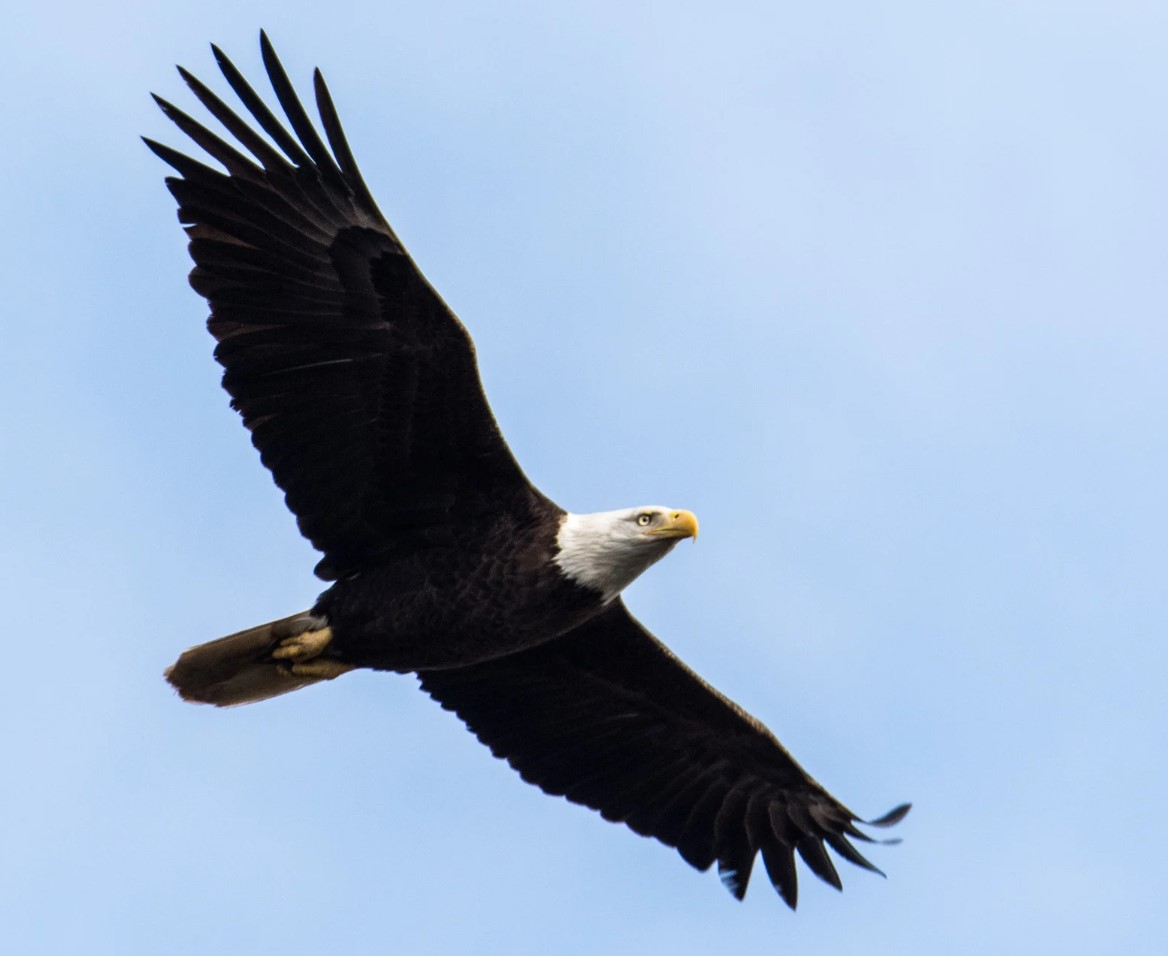
White-Tailed Eagles: Largest Golden Eagles On Earth
The White-Tailed Eagles, also known as Sea Eagles, are known for their impressive size, strength and beauty. They are the largest eagles in the world, with a wingspan that can measure up to 8 feet. These magnificent birds of prey are mostly found in coastal or wetland areas, especially in the northern parts of Europe and Asia.
Their diet mainly consists of fish, which they are known to catch by swooping down and snatching them from the water’s surface. They are also opportunistic hunters, and will sometimes steal prey from other birds or animals. Due to their size and predatory dominance, they have been known to attack larger prey such as seals and even reindeer.
- Some interesting facts about White-Tailed Eagles include:
- They are monogamous and mate for life.
- They build large nests, sometimes measuring up to 12 feet in diameter, and will use the same nest for many years.
- Their population numbers were once severely threatened due to hunting and habitat loss, but conservation efforts have helped to increase their numbers in recent years.
The White-Tailed Eagle has also played a significant role in various cultures and mythologies across the world. In Norse mythology, the eagle was believed to represent the god Odin. In Irish mythology, the eagle was associated with the sun god, and in Native American cultures, the eagle symbolized courage and strength.
| Scientific Name | Haliaeetus albicilla |
|---|---|
| Habitat | Coastal and wetland areas in Europe and Asia |
| Diet | Mainly fish, but also opportunistic hunters |
| Wingspan | Up to 8 feet |
| Conservation Status | Least Concern |
Despite their impressive size and strength, White-Tailed Eagles face numerous threats to their survival. Habitat loss and degradation, pollution, and hunting remain major issues. Poisoning from lead ammunition and pesticides also poses a significant threat, as these eagles are often at the top of the food chain and can accumulate high levels of toxins in their bodies.
Conservation efforts are crucial to ensuring that these magnificent creatures continue to thrive. Programs such as habitat restoration, wildlife-friendly farming, and education and awareness campaigns can all help to protect the White-Tailed Eagle and the habitats they rely on.
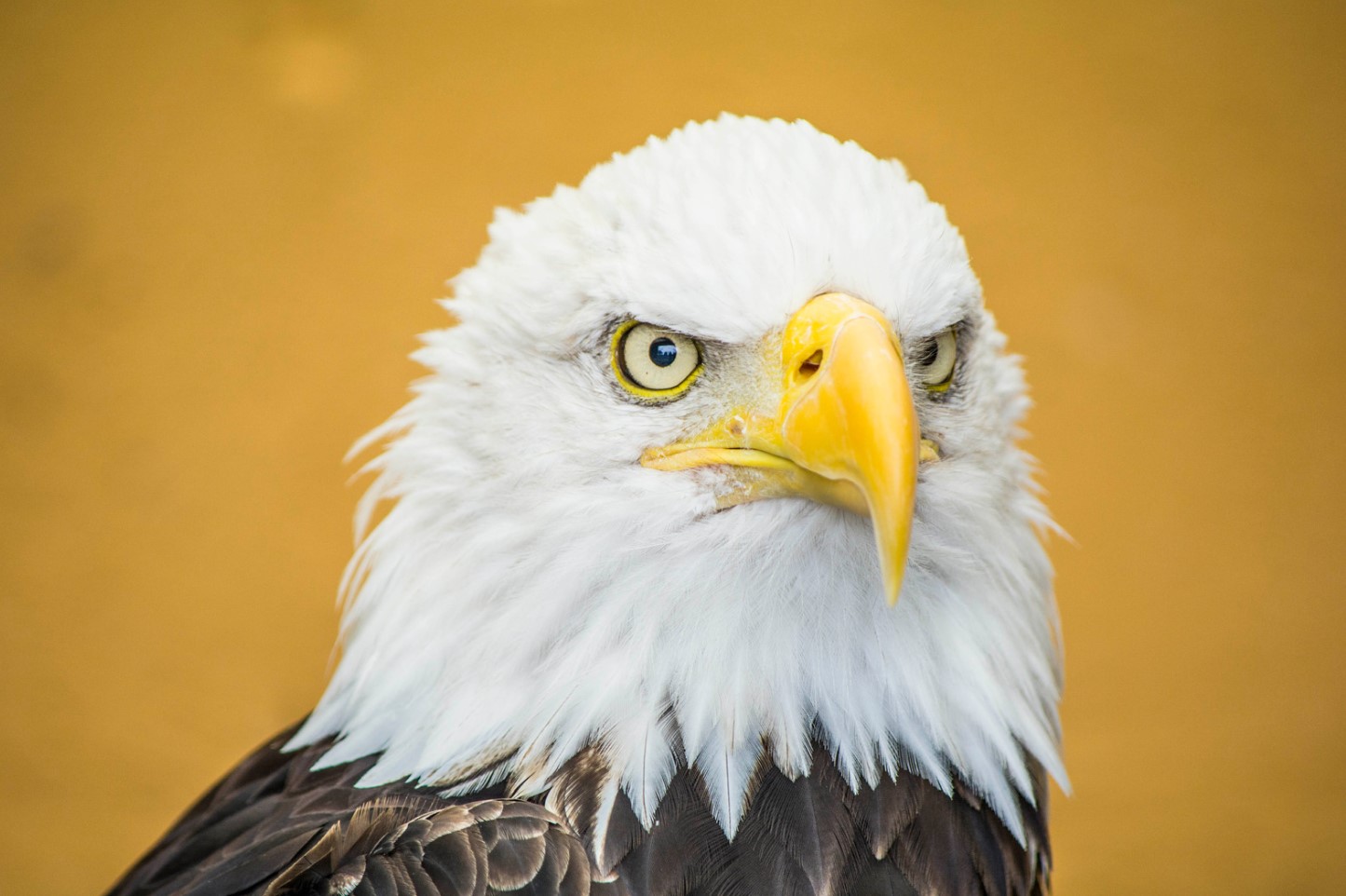
Harpy Eagles: Monstrously Impressive Rainforest Predators
Harpy Eagles are one of the most distinctive and impressive raptors that inhabit the tropical rainforests of Central and South America. Known for their monstrous size, powerful talons, and majestic appearance, these birds of prey are truly a wonder to behold for any wildlife enthusiast.
Harpy Eagles are easily recognizable by their distinctive plumage and powerful physique. They can grow up to three feet tall and have a wingspan of up to seven feet, making them one of the largest eagles in the world. Their bodies are covered in grey feathers, while their heads and necks are adorned with white plumage. Their legs are thick and powerful, and they are equipped with large, curved talons that can easily dispatch prey.
- Habitat and Distribution: Harpy Eagles are found primarily in the tropical rainforests of Central and South America, from Mexico to Brazil. They prefer tall, dense forest with high canopies, and tend to avoid open areas or disturbed habitats.
- Feeding Habits: Harpy Eagles are apex predators, and their diet consists primarily of large mammals, such as monkeys, sloths, and tree porcupines. They also occasionally prey on birds and reptiles.
- Conservation Status: Harpy Eagles are considered a Near Threatened species by the International Union for Conservation of Nature (IUCN). Habitat loss, hunting, and trade in feathers and body parts are the primary threats to their survival.
In spite of their impressive size and intimidating appearance, Harpy Eagles are seldom seen in the wild. They are notoriously elusive and difficult to observe, and their population numbers are relatively low. Nevertheless, these magnificent birds remain a symbol of the beauty and diversity of the rainforest ecosystem, and efforts to conserve their habitat are crucial for their long-term survival.
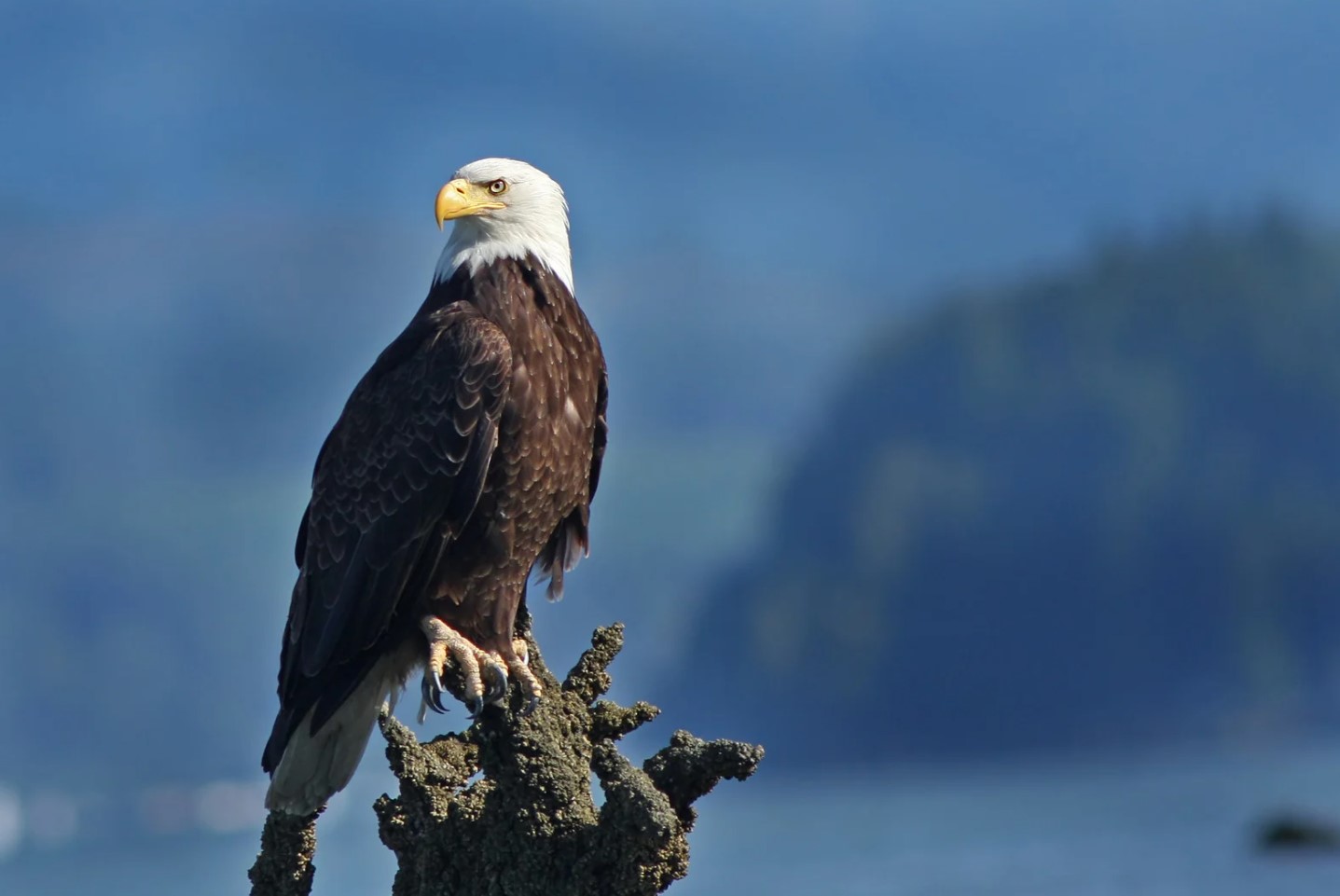
African Fish Eagles: Famous Fishermen Of The Savannas
The African Fish Eagle is one of the most recognizable birds of prey in Africa, known for its distinctive call and impressive hunting skills. Found near water bodies like rivers and lakes, these eagles are skilled fishermen and often hunt for their prey by swooping down from the sky with their powerful talons.
Their brown and white plumage, coupled with their hooked beaks and large wingspans, make these birds a sight to behold. With a body length of up to 2.5 feet and weighing up to 7 pounds, these birds are both large and imposing. Their striking appearance has made them a popular subject of African art and culture, and they are often depicted in carvings and paintings.
- These eagles are known for their unique call that sounds like a mix of a bark and a whinny.
- Their diet mainly consists of fish, but they will also feed on other birds, reptiles, and carrion if the opportunity arises.
- African Fish Eagles are monogamous and will often mate for life, with both parents taking turns to care for the eggs and chicks.
Despite their impressive skills and reputation, African Fish Eagles are not immune to threats. Habitat loss, pollution, and human interference have led to a decline in their population, and they are now classified as a species of least concern. Conservation efforts are being made to protect their natural habitats and ensure the survival of this iconic bird.
| Scientific Name: | Haliaeetus vocifer |
|---|---|
| Habitat: | Near water bodies in sub-Saharan Africa |
| Diet: | Primarily fish, as well as birds, reptiles, and carrion |
| Size: | Up to 2.5 feet in length and 7 pounds in weight |
| Conservation status: | Least Concern |
Overall, the African Fish Eagle is a majestic and important member of the African wildlife community, serving as both predator and prey in the savanna ecosystem. Its impressive hunting and survival skills, coupled with its unique appearance and call, make it a truly remarkable creature worthy of our admiration and protection.
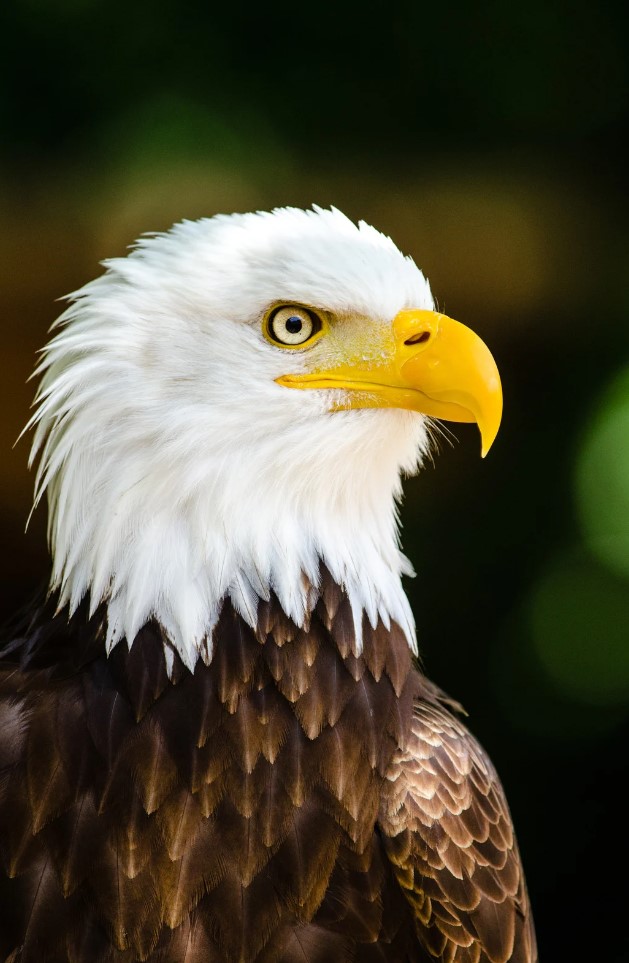
Martial Eagles: Elite Hunters Of The African Skies
Martial eagles are known as elite hunters of the African skies. These majestic birds of prey are widely known for their powerful, muscular bodies which enable them to hunt down large prey such as monkeys and antelopes. Their size and strength make them a force to be reckoned with in the wild.
These eagles are mostly found in sub-Saharan Africa, and can often be seen flying over savannas, grasslands, and woodland areas in search of prey. They have a wingspan of up to 2.6 meters and can weigh up to 6.2 kilograms, making them one of the largest eagles in Africa.
- Martial eagles are opportunistic hunters and can hunt a wide range of prey including mammals, birds, and reptiles.
- They have powerful talons and beaks, which they use to snatch their prey in mid-air, before killing it with a swift, deadly strike.
- These eagles are solitary birds and are known for their distinctive call, which can be heard from far away.
Martial eagles exhibit sexual dimorphism, meaning that males and females differ in their physical appearance. Females are usually larger and have a longer wingspan, while males have shorter wingspans and are smaller in size.
| Common Name: | Martial Eagle |
|---|---|
| Scientific Name: | Polemaetus bellicosus |
| Conservation Status: | Near Threatened |
Despite their impressive size and strength, martial eagles are still under threat from habitat loss and human-wildlife conflict. These birds are also hunted and killed by humans for their feathers and body parts, which are used in traditional medicine and for cultural purposes.
If we want to protect these magnificent creatures, we need to take action to conserve their habitats and address the threat of human-wildlife conflict. This includes reducing the impact of human activities on their habitats, as well as promoting sustainable land use practices that take into account the needs of both humans and wildlife.
Steppe Eagles: Vast Nesting Range From Europe To Asia
Steppe Eagles are one of the most widespread species of eagles in the world, with a geographic range that spans from Europe to Asia. These large birds of prey are known for their impressive size and strength, as well as their unique adaptations to life on the grasslands and steppes.
One of the key features of the Steppe Eagle is its powerful talons, which are specially adapted to grasp and carry large prey items such as rabbits, hares, and even small deer. These eagles are also highly skilled hunters, using their keen eyesight and razor-sharp beaks to locate and capture food with precision and efficiency.
- In terms of physical appearance, Steppe Eagles are typically dark brown in color, with a distinctive pale patch on their wings that is visible during flight. They also have a large, powerful beak and piercing yellow eyes that give them a fierce and intimidating look.
- Despite their large size and formidable hunting abilities, Steppe Eagles are actually quite social birds, often roosting and nesting in groups of up to 20 individuals. These communal gatherings provide an important source of protection and support, especially during the colder months when food and resources are scarce.
- Unfortunately, like many other species of eagles, Steppe Eagles are facing a number of conservation threats in today’s world. Habitat loss, pollution, and other human activities are all contributing to the decline of these magnificent birds, making it more important than ever to take action and protect their nesting sites and breeding habitats.
| Vital statistics | |
|---|---|
| Scientific name: | Aquila nipalensis |
| Range: | Europe, Asia, Middle East, and Africa |
| Habitat: | Grasslands, steppes, savannas, and deserts |
| Diet: | Small mammals, birds, reptiles, and fish |
Overall, Steppe Eagles are an amazing species of bird that are worth studying and admiring for their incredible adaptations, unique behaviors, and impressive size and strength. Although they face many challenges in today’s world, these birds are still thriving in many regions of their vast range, and with the help of conservation efforts and habitat protection measures, they can continue to soar above the grasslands and steppes for many years to come.
Egyptian Vultures: Mysterious Eagles With Unique Habits
Have you ever heard of the Egyptian Vultures? These birds of prey may not be as famous as the Eagles, but they are just as interesting. These vultures have unique habits that set them apart from other birds. For instance, they are the only bird species that use tools to obtain food.
The Egyptian Vultures belong to the family of Old World vultures. They are known for their conspicuous yellow face and beak, contrasting with their white and chestnut-colored body feathers. They are found in parts of Europe, Asia, and Africa. Unlike other vultures, they do not have bald heads but instead have fluffy white feathers all the way up to their face. This is one of the reasons why they are often called the “Pharaoh’s Chicken” due to their resemblance to the ancient Egyptian headdress.
The Egyptian Vulture’s unique tool-using behavior involves them using rocks to break open eggs or bones of other animals to eat the contents. They have been observed to fly up to 5 kilometers away to find a suitable rock for this purpose. This behavior is rare among birds and is considered as a sign of their intelligence. Unfortunately, these birds are under threat due to human activities such as habitat destruction, poisoning, and hunting. Organizations around the world have been working to protect these birds and promote their conservation.
| Classification of Egyptian Vultures | |
|---|---|
| Family | Accipitridae |
| Genus | Neophron |
| Species | Neophron percnopterus |
The Egyptian Vultures have given scientists a lot of interesting observations. They are also vital components of many cultural beliefs, including ancient Egyptian myths where they were worshiped as the symbol of the goddess Mut. These birds are a fascinating addition to the world of ornithology and a reminder of the wonder and diversity of nature. By learning about their unique habits and protecting them from threats, we can ensure that these Mysterious Eagles will continue to soar through the skies for many generations to come.
History Of Eagles: Symbols, Myths, And Cultures
The eagle is a majestic bird that has been celebrated throughout history by cultures all over the world. As a symbol, it has represented power, freedom, and strength. It’s no wonder that eagles have featured prominently in myths and legends from various cultures. In fact, the eagle has been an important part of many cultures throughout history, and its significance continues to this day. Let’s take a closer look at the history of eagles in symbols, myths, and cultures.
One of the early representations of the eagle as a symbol dates back to ancient Greece where it was associated with the god Zeus. The eagle was said to be his sacred animal and was often depicted with a thunderbolt in its talons. In Native American culture, eagles were also considered sacred animals and were believed to have a connection with the spirit world. The eagle has long been a symbol of freedom and courage, and many countries have used it as a symbol on their flags and coat of arms.
- Golden eagles, specifically, have been used as a symbol in many cultures throughout history. The bird was a symbol of power for the Persian Empire, while the Holy Roman Empire used it as a symbol of strength and courage. In some Native American tribes, the golden eagle was believed to be able to carry messages to the gods.
- Ancient Egyptian culture also revered eagles, specifically the Egyptian Vulture. In Egyptian mythology, the eagle was associated with the sun god Ra and was often depicted wearing the sun disk on its head. The eagle was also associated with Horus, the god of the sky, who was shown with the head of an eagle.
- The eagle has also played a role in modern cultures. In the United States, the bald eagle is the national bird and appears on the Great Seal of the United States. The bird has been used as a symbol of American patriotism, freedom, and strength. Similarly, eagles are used as sports team mascots, like the Philadelphia Eagles, and appear in movies and music.
Despite their significance in many cultures, eagles face significant threats to their survival, including habitat loss and hunting. Conservation efforts have been put in place to protect the bird and ensure its continued presence in our world. It’s clear that eagles have had a significant impact on many cultures throughout history, and their importance continues to this day.
Eagles İn Ancient Egyptian And Greek Civilizations
In ancient civilizations such as Egypt and Greece, the eagle was considered to be a sacred bird that was often associated with powerful deities. In these cultures, the eagle was viewed as a symbol of strength, courage, and wisdom, which is why it was often depicted in various forms of art and literature.
Eagles were not only admired for their physical attributes but also for their abilities in hunting and flying at incredible heights. Many rulers and leaders in ancient societies utilized the eagle as a symbol of their power and authority, often incorporating it into their emblems and standards.
- In ancient Greek mythology, the eagle was the mount of Zeus, the king of gods and goddesses.
- The golden eagle was one of the most revered birds in ancient Egypt, where it was associated with the sun god Ra and the pharaoh.
- On the Greek battlefields, soldiers would carry images of eagles to inspire them and to represent the strength of their armies.
It wasn’t just in ancient times where eagles featured prominently. During the Roman Empire, eagles were used on their military standards, or standards called vexilloids. These vexilloids were carried by each of the legions in the army, and represented the honor and values of the Roman Empire. The use of vexilloids continued until the fall of the Western Roman Empire in the late 5th century CE.
| Country | Bird |
|---|---|
| Greece | Zeus and Aetos Dios, the Golden Eagle of Zeus |
| Egypt | The Golden Eagle |
| Rome | The Aquila – the Roman eagle |
The eagle’s cultural significance has continued into modern times. Today, the eagle remains an iconic symbol of strength, freedom, and power, and can be found in modern societies throughout the world.
However, despite their cultural importance, eagles continue to face a variety of threats to their survival today. Habitat loss, hunting, and pollution are just a few examples of the threats that endanger these majestic birds. It is our duty to preserve these creatures for future generations to enjoy and admire, just as the ancient Egyptians and Greeks did all those years ago.
Eagles For Military, Political, And Heraldic Purposes
Eagles have been a symbol of power, strength, and freedom throughout human history. As a result, they have been extensively used in various forms of art and heraldry. They have been featured on flags, shields, coat of arms, and military emblems. People have been fascinated with the might and majesty of eagles and have used the bird as an emblem for their own agenda. In this blog post, we will discuss the various ways in which eagles have been used for military, political, and heraldic purposes.
Eagles have been a popular choice for use in military insignia and emblems. The bird’s sharp vision and fearsome talons represent the qualities that a military organization aspires to possess. The United States Armed Forces, for example, have used the eagle as a symbol of patriotism and power. The eagle appears on the Great Seal of the United States, which is used on official documents and by the American military.
- US Marine Corps: The eagle represents the courage and honor of the Marines.
- US Air Force: The eagle is a symbol of strength and freedom.
- US Army: The eagle stands for honor, courage, and devotion to duty.
Eagles have also been used for political purposes. They have been featured on flags, coats of arms, and currency of many countries. For example, in Germany, the eagle is the national emblem and represents the country’s strength and power. The Roman Empire, too, used the eagle as a symbol of its military might and imperial power.
| Country | Eagle Emblem | Meaning |
| United States | Bald Eagle | Patriotism and Power |
| Russia | Double-Headed Eagle | Royal Power |
| Mexico | Golden Eagle | Bravery and Strength |
Eagles have also been used for heraldic purposes. A coat of arms usually consists of a shield, crest, and motto. The shield and crest often feature an eagle, which represents the virtues and value of the person or organization it represents. For example, the coat of arms of the Holy Roman Empire featured a black eagle on a gold shield, which represented the imperial power and authority.
In conclusion, eagles have been used for military, political, and heraldic purposes since ancient times. The bird’s strength, power, and beauty have made it an emblem of national and imperial power. Whether used in the US military emblems, heraldry on coins or flags, eagles have always been an important part of human culture and have always held a special place in our hearts.
Eagles İn Pop Culture: Movies, Sports, And Music
Eagles have been a popular symbol across many different cultures, and their powerful and majestic nature has led to their frequent appearances in pop culture. From movies to sports, and even in music, eagles have a strong presence and continue to captivate audiences all over the world.
Movies
Eagles have been the subject of many Hollywood films over the years, often featured prominently in action and adventure movies. Perhaps the most famous eagle in cinema is the predatory bird in the movie “The Eagle” from 2011, starring Channing Tatum. Other popular movies featuring eagles include The Lord of the Rings trilogy, where giant eagles come to the rescue of our heroes several times throughout the series.
Sports
Eagles are also a popular mascot for many sports teams, both professional and amateur. The NFL team, the Philadelphia Eagles, is perhaps the most well-known example of a sports team using an eagle as their mascot. Other sports teams that have adopted an eagle as their mascot include the Atlanta Hawks in the NBA and the Boston College Eagles in college sports.
Music
Many musicians have also referenced eagles in their lyrics and album art. From the iconic “Hotel California” by the Eagles to “Eagle” by ABBA, these majestic birds have served as inspiration for musicians throughout the years. Even modern hip hop artists like Eminem have referenced eagles in their lyrics, further solidifying the bird’s presence in popular culture.
| Movie | Sport Team | Musician |
|---|---|---|
| The Eagle | Philadelphia Eagles | The Eagles |
| The Lord of the Rings trilogy | Atlanta Hawks | ABBA |
| – | Boston College Eagles | Eminem |
Eagles are not only admired in nature for their raw power and beauty, but also for their cultural significance. They remain an important symbol, serving as a mascot for some of the most famous sports teams and inspiring memorable movies and music. It is clear that these amazing creatures will continue to capture the imaginations of people for generations to come.
Eagle Conservation Strategies And Threats To Eagles’ Survival
Eagles are majestic birds of prey that have captured human fascination for centuries. Unfortunately, many of these birds are at risk due to various threats to their survival. This has led to the development of various eagle conservation strategies that aim to protect and preserve these magnificent creatures. However, despite these efforts, eagles still face numerous challenges that threaten their survival.
Conservation strategies for eagles
- Establishment of protected areas: One of the most effective conservation strategies for eagles is the creation of protected areas. These areas help to preserve habitats and ecosystems that are vital for the survival of these birds. Protected areas also help to reduce human activities that may put eagles at risk, such as deforestation, hunting, and pollution.
- Breeding programs: Breeding programs have also been instrumental in eagle conservation efforts. These programs aim to increase the number of eagles in the wild and ensure genetic diversity. They also help to reintroduce eagles into areas where they have become extinct.
- Public awareness and education: Another important strategy for eagle conservation is public awareness and education. This involves educating the public about eagles and their importance in the ecosystem. It also aims to reduce human activities that may put eagles at risk, such as using pesticides and hunting.
Threats to eagle survival
| Threats | Description |
|---|---|
| Loss of habitat | Eagles require vast areas of undisturbed habitat to thrive. However, their habitats are being destroyed due to human activities such as deforestation, agriculture, and urbanization. |
| Human persecution | Humans have hunted eagles for centuries for their feathers, meat, and other body parts. Additionally, eagles are often seen as a threat to livestock and are killed by farmers to protect their animals. |
| Climate change | Climate change is also a threat to eagle survival. Extreme weather conditions such as droughts and floods can have a devastating impact on eagle populations, especially if these conditions persist for extended periods. |
| Pollution | Pollution from various sources such as pesticides and industrial waste can also harm eagles. These pollutants can affect the birds’ immune systems and reproductive systems, making them more vulnerable to diseases and other threats. |
Protecting eagles is crucial for the long-term health of our planet. By implementing effective eagle conservation strategies and addressing the threats to their survival, we can ensure that these magnificent birds continue to grace our skies for generations to come.